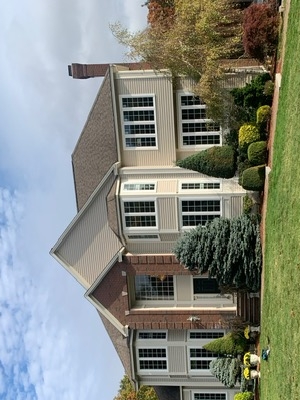Roof replacement is one of the biggest expenses on a property. If you are a rental property owner with an eye on avoiding huge costs, you have a reason to postpone roof replacement for as long as possible. But your decision about whether to repair or replace the roof of your rental should not be made solely from the perspective of cost.
The roof of your building is vital for saving costs as well as making profits on the property. A functioning roof will protect the other parts of the house and prevent damage that could result in avoidable spending. The appearance of the roof is also a major factor in the home’s curb appeal and one of the things renters look at before they lease from you.
The roof on your rental is vital for the structural integrity of the building and the performance of your business. You cannot afford to cut corners or apply half measures when handling issues with the roof. Attempting to repair the roof when you should replace it will affect its function and cause damage that will cost you more money than you are trying to save.
How can you tell when the roof on a rental property requires a simple repair job or when it needs partial or complete replacement? Knowing the difference between the two will help you maximize profit on your rental property while also keeping the home in the best shape. This article will explain the things you should look out for to make that decision.
- Consider the age of the roof. The roof on your property is supposed to last for the time specific by the material manufacturer. If the roof has reached or is close to the end of its useful life, its physical condition will usually start to deteriorate. The most common roofing material around here is asphalt shingles. Are you finding shingle granules in or around downspouts? Are shingles lifting or curling? Are parts of the roof discolored? These are all signs that the shingles are breaking down. If the roof is at or near the end of its useful life it’s time to talk to a roofing contractor.
- Has the roof been well maintained? Poor roof maintenance and extreme weather will also hasten the expiration of the roof. Can you see moss or lichen growing up there? Have you allowed ice dams to form or remain? Repeated ice dams will often prematurely age drip edges and nearby roof deck surfaces. Young roofs can be pressured washed with copper-based treatments to remove and inhibit plant growth. Likewise ice dam damage repair can sometimes be done depending on the extent of the damage. If in doubt, speak to a qualified roofing contractor.
- Damage from trees and extreme weather events. Damage from falling or wind-blown moderately-sized branches can usually be easily repaired. The same holds true for high wind events. Missing shingles caused by excessive winds can be replaced. Regular storm events that cause loss of shingles implies a deeper problem. Incorrectly installed or poorly installed roofs will have shortened lifespans and leaks or missing shingles are usually the first indication. Shingles are designed to withstand very high winds but only when installed correctly. If shingles are lost in a run-of-the-mill storm, the rest of the roof is probably weak also. Hail or hurricane debris can often mean full roof replacement, regardless of the roof age or roofing material. As a rule, if more than 30% of the roof shows signs of obvious damage, you should replace the entire roof. Damage by hailstones and hurricanes will sometimes affect the internal structures of the roof.
A Word About Leaks
Leaks always have a cause and none are benign. Before you see a leak there is always damage risk to other building components other than the observed impact site. If the leak is slow, it has gotten past the shingles, the vapor barrier, the roof deck, the rafters, and usually insulation and a ceiling. Slow leaks can saturate those other materials causing rot, mold and mildew before you ever observe the problem. Faster (bigger) leaks are observed sooner, but can impact a greater area. And any leak has the potential, however large or small, to start an electrical fire. In terms of your wallet, there is no such thing as a little leak and the sooner you address it, the cheaper the remedy will be.
Real estate investments are profitable, and to protect them you should put attention to the structural condition to avoid losing or decreasing your profit. Replacing the roof on your rental property offers the following benefits:
1. It will let you address problems you didn’t know existed with the roof.
2. It will improve the curb appeal of the property and help you attract higher-quality tenants.
3. A new roof will save you money in the long term even if the upfront cost is high.
4. It will improve energy efficiency and reduce your energy bill.


